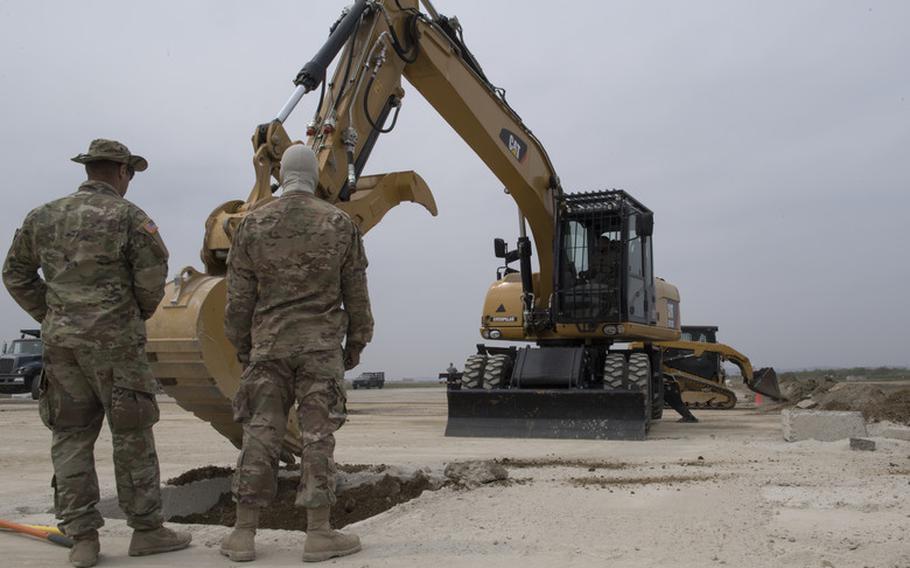Community News
Osan engineers, 554th Red Horse Squadron team up for training
51st Fighter Wing Public Affairs April 24, 2019

U.S. Airmen and Soldiers excavate a repair site during rapid airfield damage repair (RADR) training at Osan Air Base, Republic of Korea, April 19, 2019. RADR is a quick process used to repair structural damages on an airfield where civil engineers evaluate damages, prepare areas for repair and pour concrete to get the airfield back to mission ready. (U.S. Air Force photo by Staff Sgt. Ramon A. Adelan) ()
OSAN AIR BASE, Republic of Korea -- The 51st Civil Engineer Squadron successfully accomplished rapid airfield damage repair (RADR) training with assistance from the 554th Red Horse Squadron assigned to Andersen Air Force Base, Guam, April 19, 2019, at Osan Air Base, Republic of Korea.
The RADR training provided a realistic scenario with the help of the explosive ordnance disposal flight detonating explosives to create craters on a non-active section of the runway.
After the explosion, civil engineers evaluated damages, prepared areas for repair and took action to get the airfield back to mission ready.
“We were able to get our Airmen trained with the assistance from the experts at 554th Red Horse Squadron teaching them rapid airfield damage repair,” said U.S. Air Force Lt. Col. Timothy Fryar, 51st CES commander. “Training went through the week and we learned to use a variety of heavy equipment and the repair process. It all came to end with a full on execution of repairing a damaged airfield.”
The 51st CES cut, excavated and repaired 12 craters in less than 7 ½ hours.
“Without this training, the time to repair damaged airfields would drastically increase which would prohibit sortie generation for large portions of time,” said U.S. Air Force Maj. Nick Saccone, 51st CES deputy commander.
Members of the 554th RHS are considered experts in rapid engineering and uphold the motto, “semper ducimus,” which means, “always leading.”
“Providing such a realistic situation with these engineers gives them an insight to what can occur and how to handle it wherever they’re stationed,” said U.S. Air Force Staff Sgt. Michael Gardner, 554th RHS water fuels management system contingency training instructor. “We trained them, but more importantly we evaluated them on how they operated to fulfill the demand to get the airfield up and running again.”
Civil engineers at Osan were grateful for the support provided by U.S. Pacific Air Forces’ only Red Horse Squadron. Through working together, the Airmen aim to ensure they’re ready for any challenge should an accident or natural disaster occur.